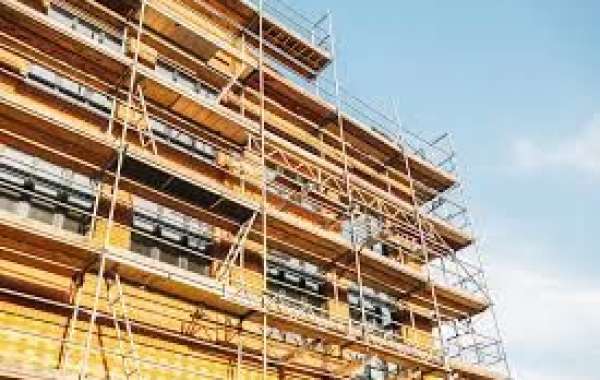Scaffolding is an essential part of construction and maintenance work, providing a safe and stable platform for workers to perform tasks at various heights. Whether it’s painting a tall building, repairing a bridge, or constructing a skyscraper, the right type of scaffolding plays a vital role in ensuring worker safety, efficiency, and stability of the structure. There are several scaffolding types available, each suited for different types of projects, heights, and environmental conditions.
In this article, we’ll explore the scaffolding types of scaffolding, their uses, benefits, and considerations. Understanding the different scaffolding types can help contractors, architects, and workers choose the most suitable and cost-effective option for their specific project needs.
Different Scaffolding Types and Their Uses
Each type of scaffolding has its specific characteristics, and selecting the right type depends on factors such as project requirements, height, load-bearing capacity, and work duration. Here are some of the most common scaffolding types used in the construction industry:
Tube and Coupler Scaffolding
Tube and coupler scaffolding is one of the oldest and most versatile types of scaffolding. It consists of two main components: tubes and couplers. The tubes form the vertical, horizontal, and diagonal sections of the scaffolding, while the couplers connect them at various angles, creating a stable framework.
Frame Scaffolding
Frame scaffolding is a popular choice for residential and commercial construction projects, particularly for tasks that require working at moderate heights. This type of scaffolding consists of pre-fabricated rectangular frames that are easy to assemble and stack on top of each other, making it quick to install and dismantle.
Suspended Scaffolding
Suspended scaffolding is often used for tasks that involve work on the upper stories of tall buildings, such as window cleaning, painting, and façade repairs. In this system, the platform is suspended from the roof or a higher part of the building using ropes or wires, allowing it to be raised or lowered to different levels.
Cantilever Scaffolding
In cantilever scaffolding, the structure is supported by cantilever beams rather than resting on the ground. This type of scaffolding is used when there is limited space on the ground or when the ground is unsuitable for placing standard scaffolding. Cantilever scaffolding is commonly used for bridge construction and other projects where the foundation cannot support a traditional setup.
Single and Double Scaffolding
Single scaffolding, also known as bricklayer scaffolding, is used mainly for masonry work and is set up parallel to the wall at a fixed distance. Single scaffolding is supported by a series of vertical supports, called standards, connected by horizontal ledgers.
Mobile Scaffolding
Mobile scaffolding is equipped with wheels or casters, allowing it to be moved from one location to another easily. This type of scaffolding is often used for projects that require frequent relocation, such as painting, plastering, or other finishing work in multiple areas. Mobile scaffolding provides the flexibility to adjust the structure's position without needing to dismantle and reassemble it.
Project Requirements: Consider the height, complexity, and nature of the task. Projects requiring high load-bearing capacity and flexibility may benefit from tube and coupler scaffolding, while shorter tasks may only need mobile or frame scaffolding.
Safety Standards: Certain types of scaffolding, like suspended and cantilever scaffolding, require strict adherence to safety regulations. Ensure that your choice of scaffolding meets safety standards and is inspected regularly.
Cost: The cost of scaffolding can vary based on the type and size of the structure. Frame scaffolding and single scaffolding are more economical, while cantilever scaffolding and tube and coupler scaffolding can be more expensive due to their complexity.
Accessibility: Some scaffolding types, like suspended scaffolding, provide easier access to elevated areas, while others, like double scaffolding, are better suited for masonry work. Choose a type that provides the best accessibility for your specific tasks.
Conclusion
Understanding the different scaffolding types available is essential for making informed decisions that enhance worker safety, efficiency, and cost-effectiveness. Each scaffolding type has unique features that make it suitable for specific applications, whether it’s single scaffolding for bricklaying, mobile scaffolding for versatile tasks, or cantilever scaffolding for narrow, confined areas. By evaluating your project’s needs, adhering to safety standards, and selecting the appropriate scaffolding, you can ensure a safe and productive work environment.
If you are looking for iron bars, please visit our website : www.steeloncall.com or you can contact us through our toll-free number: 18008332929
#Scaffolding #DoubleScaffolding #BuildingSafety #CantileverScaffolding#SuspendedScaffolding




